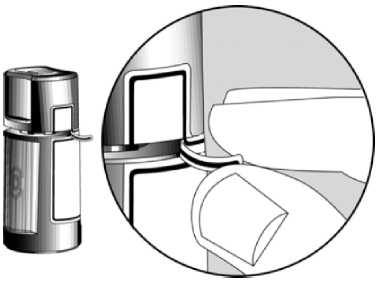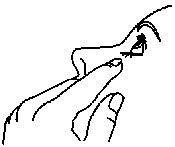Cosopt 20 Mg/Ml + 5 Mg/Ml Eye Drops Solution
1. What Cosopt is and what it is used for
PACKAGE LEAFLET: INFORMATION FOR THE USER COSOPT® 20 MG/ML + 5 MG/ML EYE DROPS, SOLUTION
(dorzolamide hydrochloride/ timolol maleate)
This product is available in the above name but will be referred to as Cosopt throughout the remainder of this leaflet.
Read all of this leaflet carefully before you start using this medicine because it contains important information for you.
- Keep this leaflet. You may need to read it again.
- If you have any further questions, ask your doctor or pharmacist.
- This medicine has been prescribed for you only. Do not pass it on to others. It may harm them, even if their signs of illness are the same as yours.
- If you get any side effects, talk to your doctor or pharmacist. This includes any side effects not listed in this leaflet. See section 4.
What is in this leaflet
1. What Cosopt is and what it is used for
2. What you need to know before you use Cosopt
3. How to use Cosopt
4. Possible side effects
5. How to store Cosopt
6. Contents of the pack and other information
Cosopt contains two medicines: dorzolamide and timolol.
• Dorzolamide belongs to a group of medicines called “carbonic anhydrase inhibitors”.
• Timolol belongs to a group of medicines called “beta blockers”.
These medicines lower the pressure in the eye in different ways.
Cosopt is prescribed to lower raised pressure in the eye in the treatment of glaucoma when beta-blocker eyedrop medicine used alone is not adequate.
• taking another carbonic anhydrase inhibitor such as acetazolamide.
• taking monoamine oxidase inhibitors (MAOIs) which are used to treat depression.
• taking a parasympathomimetic medicine which may have been prescribed to help you pass urine. Parasympathomimetics are also a particular type of medicine which is sometimes used to help restore normal movements through the bowel.
• taking narcotics such as morphine used to treat moderate to severe pain.
• taking medicines to treat diabetes.
• taking antidepressants known as fluoxetine and paroxetine.
• taking a sulfa medicine.
• taking quinidine (used to treat heart conditions and some types of malaria).
Pregnancy and breast-feeding
Ask your doctor or pharmacist for advice before taking any medicine.
Use in pregnancy
Do not use Cosopt if you are pregnant unless your doctor considers it necessary
Use in breast-feeding
Do not use Cosopt if you are breast-feeding. Timolol may get into your milk. Ask your doctor for advice before taking any medicine during breast-feeding.
Driving and using machines
No studies on the effects on the ability to drive or use machines have been performed. There are side effects associated with Cosopt, such as blurred vision, which may affect your ability to drive and/or operate machinery. Do not drive or operate machinery until you feel well or your vision is clear.
Cosopt contains benzalkonium chloride
If you wear soft contact lenses, you should consult your doctor before using Cosopt (the preservative benzalkonium chloride may possibly discolour the lenses).

3.
Finger Push Area ►

Do not use Cosopt
• if you are allergic to dorzolamide hydrochloride, timolol maleate or any of the other ingredients of this medicine (listed in section 6).
• if you have now or had in the past respiratory problems, such as asthma or severe chronic obstructive bronchitis (severe lung disease which may cause wheeziness, difficulty in breathing and/or longstanding cough).
• if you have a slow heart beat, heart failure or disorders of heart rhythm (irregular heart beats).
• if you have severe kidney disease or problems, or a prior history of kidney stones.
• if you have excess acidity of the blood caused by a build up of chloride in the blood (hyperchloraemic acidosis).
If you are not sure whether you should use this medicine, contact your doctor or pharmacist.
Warnings and precautions
Talk to your doctor before using Cosopt.
Tell your doctor about any medical or eye problems you have now or have had in the past:
• coronary heart disease (symptoms can include chest pain or tightness, breathlessness, or choking), heart failure, low blood pressure.
• disturbances of heart rate such as slow heart beat.
• breathing problems, asthma or chronic obstructive pulmonary disease.
• poor blood circulation disease (such as Raynaud's disease or Raynaud's syndrome).
• diabetes as timolol may mask signs and symptoms of low blood sugar.
• overactivity of the thyroid gland as timolol may mask signs and symptoms.
Tell your doctor before you have an operation that you are using Cosopt as timolol may change effects of some medicines used during anaesthesia.
Also tell your doctor about any allergies or allergic reactions including hives, swelling of the face, lips, tongue, and/or throat which may cause difficulty in breathing or swallowing.
Tell your doctor if you have muscle weakness or have been diagnosed as having myasthenia gravis.
If you develop any eye irritation or any new eye problems such as redness of the eye or swelling of the eyelids, contact your doctor immediately.
If you suspect that Cosopt is causing an allergic reaction or hypersensitivity (for example, skin rash, severe skin reaction, or redness and itching of the eye), stop using this medicine and contact your doctor immediately.
Tell your doctor if you develop an eye infection, receive an eye injury, have eye surgery, or develop a reaction including new or worsening symptoms.
When Cosopt is instilled into the eye it may affect the entire body.
If you wear soft contact lenses, you should consult your doctor before using this medicine.
Use in children
There is limited experience with Cosopt in infants and children.
Use in elderly
In studies with Cosopt, the effects of this medicine were similar in both elderly and younger patients.
Use in patients with liver impairment
Tell your doctor about any liver problems you now have or have suffered from in the past.
Other medicines and Cosopt
Cosopt can affect or be affected by other medicines you are using, including other eye drops for the treatment of glaucoma. Tell your doctor if you are using or intend to use medicines to lower blood pressure, heart medicine or medicines to treat diabetes. Tell your doctor or pharmacist if you are using, have recently used or might use any other medicines. This is particularly important if you are:
• taking medicine to lower blood pressure or to treat heart disease (such as calcium channel blockers, beta-blockers or digoxin).
• taking medicines to treat a disturbed or irregular heartbeat such as calcium channel blockers, beta-blockers or digoxin.
• using another eye drop that contains a beta-blocker.
Always use this medicine exactly as your doctor has told you. Check with your doctor or pharmacist if you are not sure. The appropriate dosage and duration of treatment will be established by your doctor.
The recommended dose is one drop in the affected eye(s) in the morning and in the evening.
If you are using this medicine with another eye drop, the drops should be instilled at least 10 minutes apart.
Do not change the dose of the medicine without consulting your doctor.
Do not allow the tip of the container to touch the eye or areas around the eye. It may become contaminated with bacteria that can cause eye infections leading to serious damage of the eye, even loss of vision. To avoid possible contamination of the container, wash your hands before using this medicine and keep the tip of the container away from contact with any surface. If you think your medication may be contaminated, or if you develop an eye infection, contact your doctor immediately concerning continued use of this bottle.
Instructions for use
1. Before using the medication for the first time, be sure the Safety Strip on the front of the bottle is unbroken. A gap between the bottle and the cap is normal for an unopened bottle.
Opening Arrows ►
Safety Strip ►

2. First wash your hands, then tear off the Safety Strip to break the seal.
Gap ►
Finger Push Area ►

To open the bottle, unscrew the cap by turning as indicated by the arrows on the top of the cap. Do not pull the cap directly up and away from the bottle. Pulling the cap directly up will prevent your dispenser from operating properly.
4. Tilt your head back and pull your lower eyelid down slightly to form a pocket between your eyelid and your eye.

